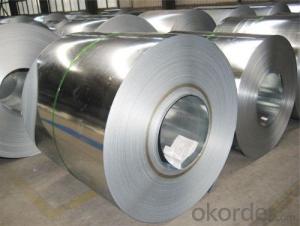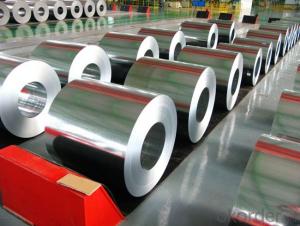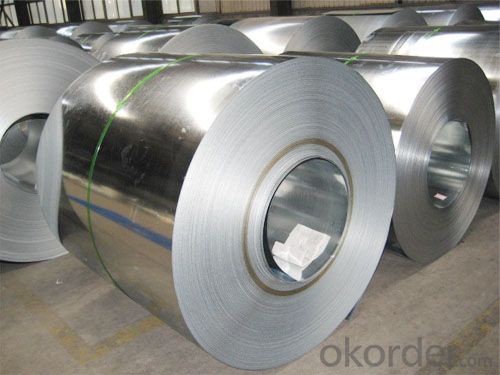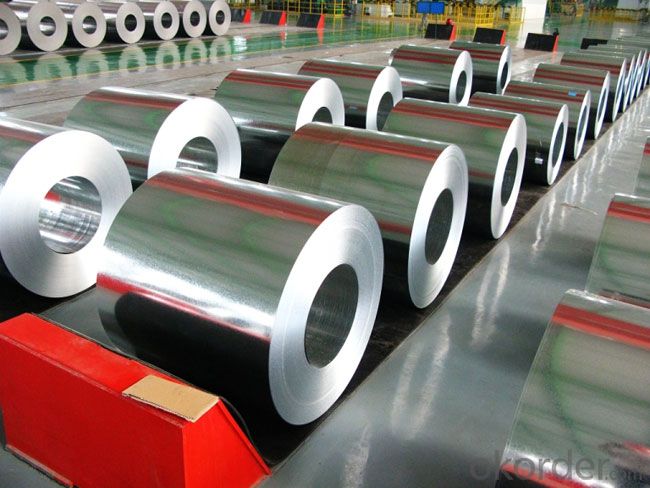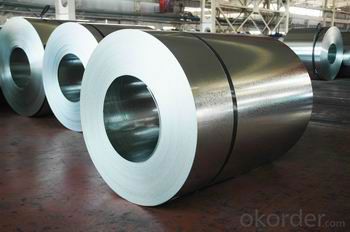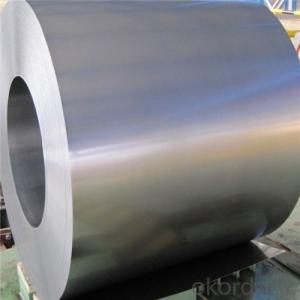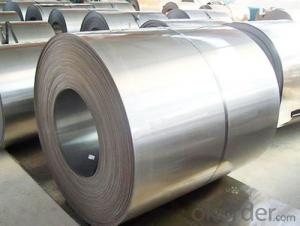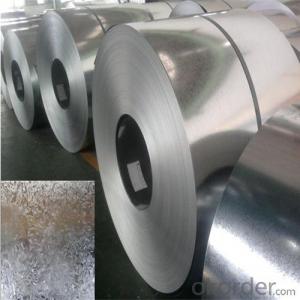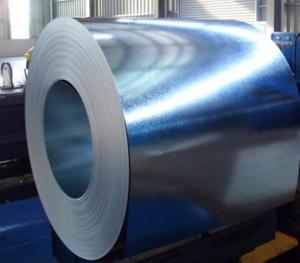Hot-Dip Galvanized Steel Coil Used for Industry with No.1Quality
- Loading Port:
- Shanghai
- Payment Terms:
- TT or LC
- Min Order Qty:
- 25 m.t.
- Supply Capability:
- 8000 m.t./month
OKorder Service Pledge
OKorder Financial Service
You Might Also Like
Hot-Dip Galvanized Steel Coil Used for Industry
1.Structure of Hot-Dip Galvanized Steel Coil Description
Hot-dip galvanized steel coils are available with a pure zinc coating through the hot-dip galvanizing process. It offers the economy, strength and formability . The hot-dip process is the process by which steel gets coated in layers of zinc to protect against rust. It is especially useful countless outdoor and industrial applications.
2.Main Features of the Hot-Dip Galvanized Steel Coil
•High Purity
•Easy control and operation
•High strength
•Fast melting
•Competitive price
•Best Service
3. Hot-Dip Galvanized Steel Coil Images

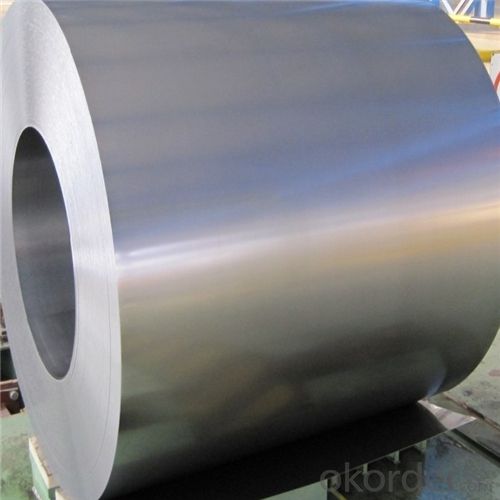
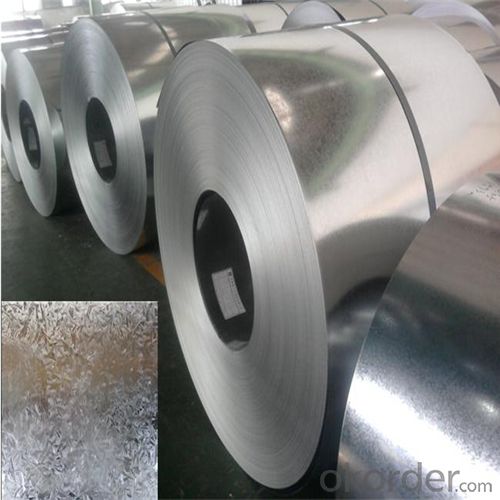
4. Hot-Dip Galvanized Steel Coil Specification
Hot-Dip Galvanized Steel Coil | |
Thicknenss | 0.10mm-5.00mm |
Width | 2000mm max |
Coating mass | 30-600g/㎡ |
Spangle | Regular/Minimized/Zero Spangle |
Coil inner diameter | 508-610mm |
Surface treatment | Chromated/non chromated, Oiled/non oiled, Anti finger print |
5.FAQ of Hot-Dip Galvanized Steel Coil
We have organized several common questions for our clients,may help you sincerely:
①How about your company?
Annually more than 8000 tons Precision casting and forging parts are exported to markets in Europe,America and Japan. OEM casting and forging service available according to customer’s requirements.
②How to guarantee the quality of the products?
We have established the international advanced quality management system,every link from raw material to final product we have strict quality test.
③How long can we receive the product after purchase?
Commonly 7 to 10 working days can be served.
- Q: How are steel coils used in the production of roofing systems?
- The production of roofing systems involves the utilization of steel coils in various ways. Initially, the steel coils undergo unrolling and are then fed into a machine, where they are cut to the desired length for the roofing panels. Typically, these coils are composed of galvanized steel, which is coated with a layer of zinc to protect against rust and corrosion. Once the coils have been cut, they are subsequently passed through a roll-forming machine. This machine is responsible for shaping the steel into the necessary profile for the roofing panels. The specific shape of the panels may differ depending on the design and functionality of the roofing system. Following the formation of the steel, it may undergo additional processes, such as embossing or stamping, to incorporate texture or patterns onto the panels. This aids in enhancing the visual appeal of the roofing system and providing it with a distinct appearance. After the steel panels have been formed and processed, they are coated with supplementary protective layers or finishes, such as paint or polymer coatings. These coatings further augment the durability of the roofing system and offer resistance against weather elements, UV rays, and corrosion. The final step in the production of roofing systems entails the installation of the steel panels on the roof. Typically, the panels are secured to the roof structure using screws or nails. The panels are designed to interlock, ensuring a secure and watertight installation that safeguards against leaks and moisture infiltration. In conclusion, steel coils play a vital role in the production of roofing systems, providing a durable and long-lasting material that can withstand harsh environmental conditions. The versatility of steel permits various design options and customization, making it a favored choice for roofing applications.
- Q: Can steel coils be coated with self-cleaning materials?
- Yes, steel coils can be coated with self-cleaning materials. These materials, typically hydrophobic or photocatalytic coatings, can help prevent the accumulation of dirt, grime, and other contaminants on the surface of the steel coils. This not only maintains the aesthetic appeal of the coils but also reduces the need for frequent cleaning and maintenance.
- Q: What is the difference between carbon steel and spring steel?? And which is the better one to make swords with??
- High Carbon Spring Steel
- Q: what is the stucture of high carbon steel
- That is kind of a broad question because high carbon steel can cover a broad range and you did not mention the condition. But I will try to keep it simple. If it is in a wrought condition, it would likely be pearlite plus carbides along the grain boundaries., The atomic structure would be body centered cubic. Sometimes high carbon steel is spherodized annealed and that would be ferrite with lots of round carbides. The atomic structure would be body centered cubic. If it is quench and tempered, it would be martensite and would probably have noticeable carbides if the carbon content was high enough. The atomic structure would be body centered tetragonal
- Q: What is the accuracy of steel tape inspection?
- The project is through the detection of steel tape, steel tape each batch have the error him different, so do projects each into a batch of steel tape has to go through the inspection department, let this batch of steel tape has reached the same error range. All the measuring tools in this project are unified into these steel tape measures, so that the measurement error is guaranteed.
- Q: How are steel coils used in the production of automotive stampings?
- Steel coils are an essential component in the production of automotive stampings. These coils are typically made from high-quality steel and are cut into specific widths and lengths to meet the requirements of automotive manufacturers. The first step in using steel coils for automotive stampings is to uncoil the steel. This is done using a machine called a decoiler, which unwinds the coil and feeds it into the stamping machine. The decoiler ensures a continuous supply of steel for the stamping process. Once the steel coil is unwound, it is fed into the stamping machine, which is equipped with a die that shapes the steel into the desired automotive component. The die is designed to create precise and complex shapes, such as car body panels, doors, fenders, or structural components. The stamping machine applies force to the steel coil, pressing it against the die and forming it into the desired shape. The high-quality steel used in the coils ensures that the stamped components have the necessary strength and durability required for automotive applications. After the stamping process, the stamped components are inspected for quality and precision. Any imperfections or defects are identified and corrected before the components are sent for further processing, such as painting, welding, or assembly. Overall, steel coils play a crucial role in the production of automotive stampings. They provide a continuous supply of high-quality steel, which is shaped into precise and durable automotive components. The use of steel coils ensures that the automotive stampings meet the required standards for strength, durability, and precision.
- Q: What does INOX Steel means?I have been looking up the meaning but cannot find it... please help...
- www.okorder /
- Q: I had a damascus steel katana made for me and was wondering if I could put gun blue on it to make the steel black and it still work right
- There okorder , the true Damascus is a region of spain, which is similar to getting swords made in Pakistan
- Q: If i get a samurai sword made of carbon steel, what is the hardest thing i can hit before it breaks? Or will it not break?
- The term carbon steel by itself doesn't mean much. All steel has carbon in it. The definition of steel is iron that has been heated and had carbon dissolved into it and trapped on cooling into its atomic matrix. The amount of carbon in a particular piece of steel does have an effect on its properties. The more carbon it has, the harder it is, but also the more brittle it is. So you can have a high carbon steel blade which is very hard, and holds a great edge, but is likely to break. Or you can have a low carbon steel blade that is very tough and hard to break, but dulls easily. Your real, traditional samurai swords were made to have a core of low carbon steel, jacketed with an outer layer of high carbon steel. Thus they were very strong and hard to break, yet had an extremely hard, sharp edge. If that's what you have you can probably whack away to your hearts content. But you probably have some kind of homogenous steel reproduction type blade. What you can do depends on what steel was used.
- Q: How are steel coils inspected for flatness using optical sensors?
- Steel coils are inspected for flatness using optical sensors by measuring the surface profile of the coil. These sensors use laser or camera technology to scan the coil's surface and detect any deviations from a perfectly flat shape. The collected data is then analyzed to identify any areas that do not meet the required flatness criteria, allowing for necessary adjustments to be made before the steel coils are further processed or shipped.
Send your message to us
Hot-Dip Galvanized Steel Coil Used for Industry with No.1Quality
- Loading Port:
- Shanghai
- Payment Terms:
- TT or LC
- Min Order Qty:
- 25 m.t.
- Supply Capability:
- 8000 m.t./month
OKorder Service Pledge
OKorder Financial Service
Similar products
Hot products
Hot Searches
Related keywords
